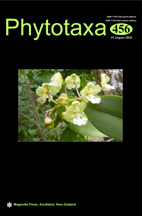Abstract
Ganoderma bambusicola sp. nov. is described and illustrated from tropical Taiwan; it is also found in Laos and Myamar. The species is recognized as new based on morphological study and phylogenetic analyses using three gene regions: ITS, rpb2 and tef1-α. Ganoderma bambusicola has been incorrectly identified as G. neojaponicum in Taiwan for several decades on account of it having a similar shiny dark reddish brown to purplish black pileus surface and a blackish long stipe, but it differs from the latter species in having a homogeneous pileal context. Ganoderma bambusicola is, to date, only known from southern Asia and grows on bamboo roots, while G. neojaponicum occurs on roots or trunks of conifers in Japan, China and Korea. These two species do not have a close relationship according to the present phylogenetic study.

